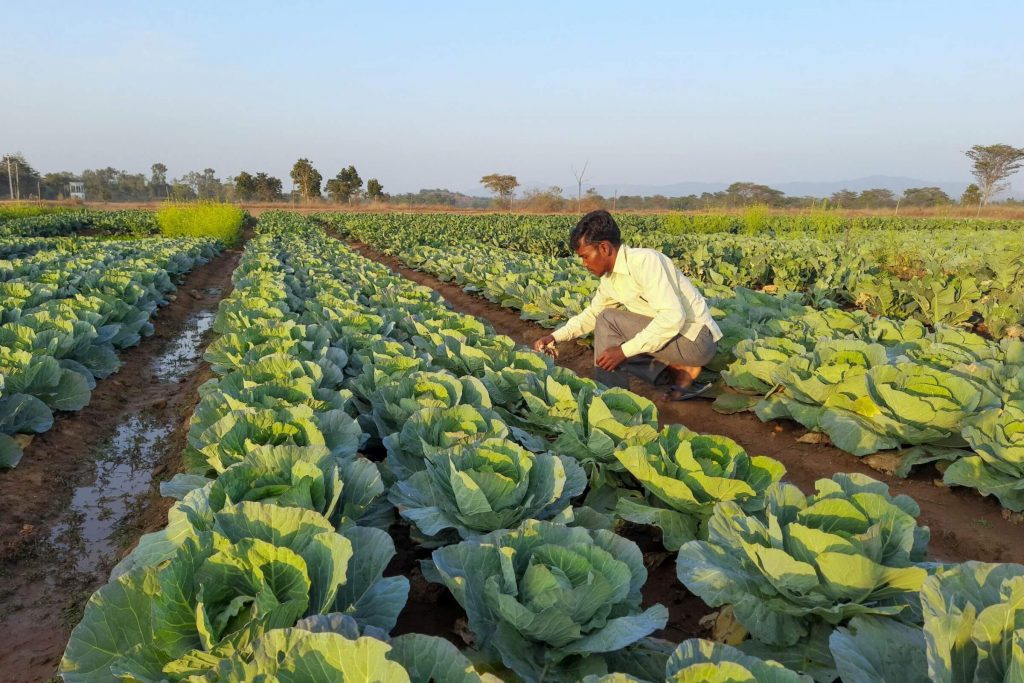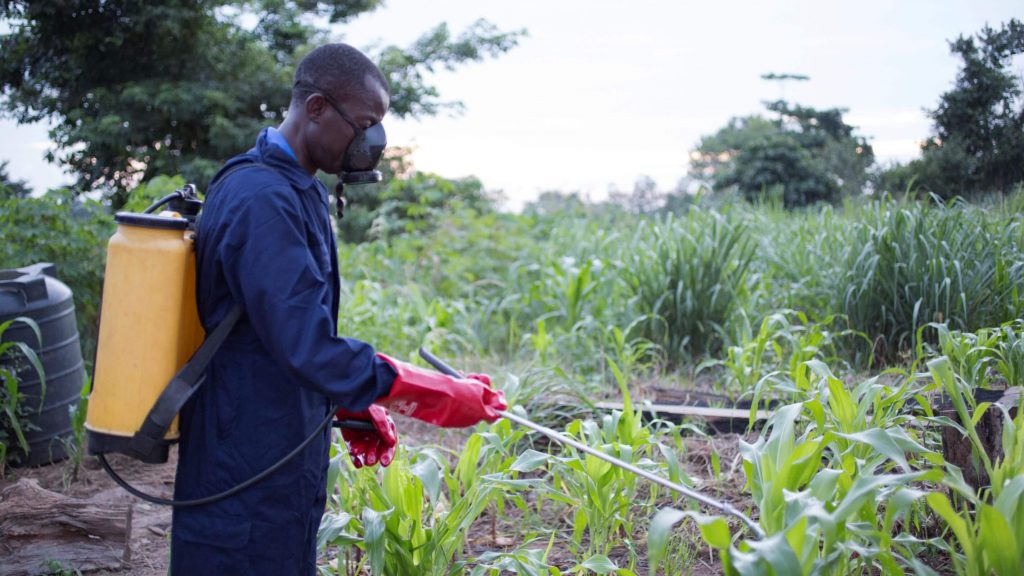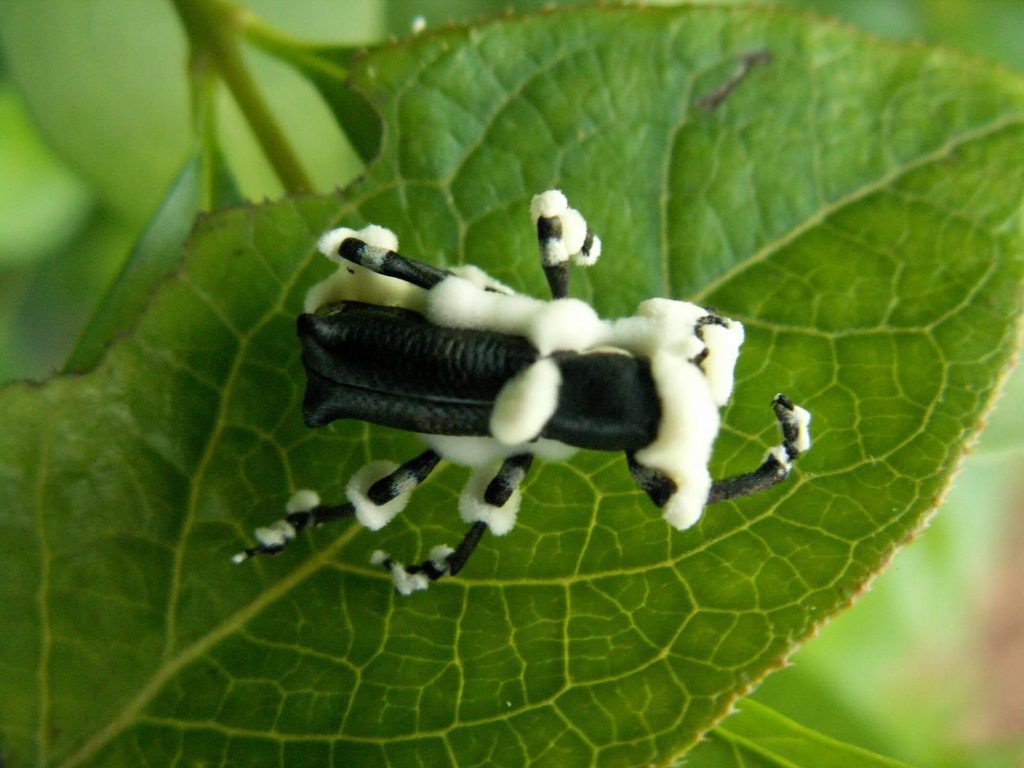Timing, storage, handling, and method of application of biopesticides for pest management can be critical in ensuring the efficacy of the product. Here, you will find a selection of resources that will support you in maximizing the impact of these agents in your production system.
Overview
- Why use biopesticides?
- Use of biopesticides Step 1: Pest monitoring
- Use of Biopesticides Step 2: Storage
- Use of Biopesticides Step 3: Application
- Use of Biopesticides Step 4: Evaluating product efficacy
- Summary and useful links
Why use biopesticides?
There are many good reasons to use biopesticides and biocontrol products:
- They are natural and have a minimal environmental impact, plus they leave little or no toxic residues, so we get cleaner and safer food.
- They can introduce different modes of action to their chemical counterparts, reducing pesticide resistance.
- Many have zero or very low pre-harvest and re-entry intervals.
- Many products are highly specific to the target pest.
- And many are perfectly compatible with standard spray equipment.
Biopesticides can also be used within an Integrated Pest Management (IPM) programme/approach. A good example of how biocontrol or bioprotection fits within an overall IPM strategy is this IPM Pyramid.
Illustrations of how these components can be put together for specific crops can be seen in these panels from IBMA: IPM in practice.
Use of biopesticides step 1: Pest monitoring

Since biopesticide and biocontrol products are highly specific to a pest or a group of pests, they are the most effective when used against the correct pest. That is why you need to know which pest(s) they are dealing with.
It is crucial to inspect the crop regularly, looking for pests or signs of damage of pests and diseases. This step is called scouting. If you detect a pest, you must monitor it to assess its threat. Various ways can help monitor pests, such as monitoring traps like pheromones traps or digital tools.
A quick guide to effective crop monitoring is provided in this short video from the UK’s AHDB:
Use of biopesticides step 2: Storage
The following video highlights some of these issues for the biocontrol agent Metarhizium:
As for conventional pesticides, you should still consider personal hygiene and safety. Depending on the product, personal protective equipment such as gloves or a mask might be required.
The following video highlights the need for PPE in the use of the fungal biocontrol agent Metarhizium:
Use of biopesticides step 3: Application
Considering the wide range of bioprotection products, ways of applying them in the field are also various. In general, you should apply bioprotection products early or later in the day so that the temperatures are not too high, and the UV rays are not too strong, preventing product denaturation. Although, always consult the product label to know what the correct application and dosage are.


Examples of application
Microbials
Their application is different depending on the type of product: coating seeds, mixing with manure, directly applying in the field, etc. The following videos show how you can apply the fungal bioprotection agent Metarhizium.
Macrobials
Usually, you can directly release live predators in the field. However, some have precise application requirements. For example, some predators must be released to certain parts of plants only.
Parasitoids sometimes come as eggs glued onto cards. You can staple these cards on leaves. This is the case for Trichogramma parasitoids, for example.
A useful guide to the combination of EPNs with chemical pesticides can be found on the e-nema website.
Use of biopesticides step 4: Evaluating product efficacy
After applying the product, its efficacy must be evaluated to determine whether the pest has been controlled to satisfying levels or if further treatment is necessary.
The time between application and visible effects depends on the type of product used and is specified by the product label. To evaluate the impact of the product, you can look for signs in the field, such as signs of infection, dead pests, or the ratio of pests left.
For example, larvae infected by a fungal biopesticide usually stop feeding right after they ingest it. Some days later, you can find dead larvae with hard bodies. When the humidity is high, spores (the reproductive units of fungi) can even be visible outside the insect body. Scouting the field helps to notice those signs and to monitor results. If the pest is still present, you should consider further control measures.


Summary and useful links
These are all the basics you need to be aware of, whether you want to learn how to maximize the efficacy of biocontrol and biopesticide products or if you are just getting started with them. However, we strongly advise consulting a professional and carefully reading the product labels when using a plant protection product before going through any of these steps.
- Use the Biobest Side Effect Manual, a helpful tool to ensure the maximum efficacy of your bioprotection product.
- Why not take our free course on “Introduction to bioprotection products” for further learning?
- To find biocontrol and biopesticide products in your country, browse the CABI BioProtection Portal.
